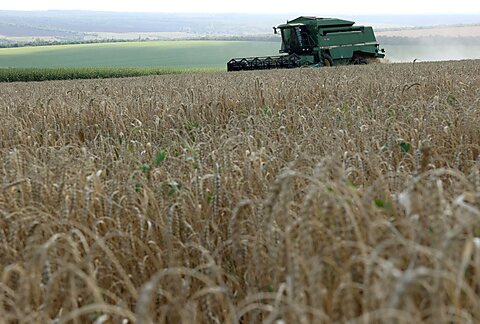
Congress Should Cut ‘Farm Welfare’ — That Is, Farm Subsidies
Chris Edwards
With the congressional debate over a new farm bill on the horizon, the Environmental Working Group (EWG) held a conference today to examine farm policies. The speakers included both environmentalists and fiscal conservatives who share views that some farm programs are anti‐green and benefit wealthy landowners who do not need the money. The EWG has been a leader in calling for farm subsidy reform.
The following are my comments at the conference.
Thanks to EWG for assembling an impressive group of farming and budget experts. EWG provides a crucial input to the debate so that policymakers receive a balanced view of farm policies. I will discuss some big picture points about the U.S. Department of Agriculture (USDA) and farm support.
The USDA is a sprawling bureaucracy with 100,000 employees, including 53,000 running agricultural programs. It has about 1,300 employees just in its economics and statistics offices, indicating the large federal micromanagement of this industry.
The department runs about 150 programs for farms and agriculture. It has more than 4,500 locations, with at least 2,300 of those for agriculture. In today’s online economy, do we really need all those brick‐and‐mortar government offices?
Agriculture is a uniquely coddled industry. It is true that the federal government is lavishing subsidies on a growing number of industries, including energy, automobiles, and semiconductors. This is a very troubling trend. There are dozens of other industries that could say they also deserve subsidies because of risks, tough foreign competition, or other reasons. Are the politicians going to hook every industry in America on federal subsidies? Unfortunately, that is the direction we are going.
Agriculture is a prosperous industry and does not need subsidies. Back in 1960, farm households earned just two‐thirds of what other U.S. households earned, on average. But that situation has flipped, and today farm households earn one‐third more than other U.S. households.
Farming does not appear to be any more risky than many other industries. The business bankruptcy rate in farming is just one‐half to one‐third the rate of all U.S. businesses. And farming generally pays a lighter load of income taxes than other industries.
In 2023, USDA outlays for agriculture will be about $48 billion. Roughly one‐quarter of that spending goes to public‐interest activities, such as food safety, animal and plant inspections, research, and conservation. The other three‐quarters goes to private‐interest activities, that is, subsidies to farmers.
Could the U.S. agricultural industry prosper without subsidies? We can look to New Zealand as an example of farming with very few subsidies. New Zealand is six times more economically dependent on agriculture than is the United States. Nonetheless, New Zealand slashed its farm protections and subsidies in the mid‐1980s, and today it provides the least producer subsidies of all the OECD nations.
A 2017 New Zealand government review looked back at the country’s reforms. There were difficult adjustments after the policy changes, but a more efficient industry had emerged by the 1990s. The review noted, “Agriculture productivity has quadrupled .… There was also an indirect positive impact on the environment.” And it argued that today New Zealand agriculture is “run as any other business” with “industry being better placed to respond to market demand.”
Other speakers at today’s summit will tackle the main farm subsidy programs—crop insurance and the crop payment programs—but let me point to two other types of subsidy that Congress should reassess.
First, there are the trio of three foreign aid programs—Food for Peace, Food for Progress, and McGovern-Dole—that donate about $2 billion a year of U.S. farm products to poor countries abroad. There has long been tension between foreign aid experts, who favor flexibility on how we help poor countries, and U.S. farming interests who lobby for in‐kind food aid. One problem with in‐kind food aid is that it ships with cargo preference rules that unnecessarily raise costs.
There is also bureaucratic overlap in foreign aid between the USDA and the U.S. Agency for International Development (USAID). Congress should consider getting the USDA out of foreign aid and leaving it to USAID. Both the Obama and Trump administrations raised concerns about the value of in‐kind food aid. The Trump administration proposed eliminating the Food for Peace and McGovern‐Dole programs.
A second USDA activity that seems dubious is the Agricultural Marketing Service’s Section 32. This program spends about $1 billion a year buying selected farm products (particularly meats, fruits, and vegetables) partly in an effort to boost prices. Created in 1935, Section 32 is old‐fashioned central planning and out of place in the modern market economy.
Earlier this year, House conservatives pushed for spending restraint, and Congress agreed to the bipartisan debt‐ceiling deal in May. With the upcoming farm bill, we will see whether House conservatives are actually fiscally conservative and willing to cut farm welfare, particularly for high‐earning farm households.
Republicans often say that low‐income welfare, such as food stamps, should be only temporary, and that people should strive to stand on their own two feet. The same should be true of high‐income welfare—that is, subsidies for farmers.
For more on farm policy, see this new Cato study and the work of EWG.
